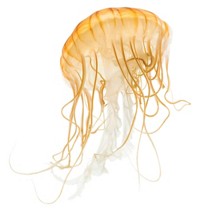Advertisement
Grab your lab coat. Let's get started
Welcome!
Welcome!
Create an account below to get 6 C&EN articles per month, receive newsletters and more - all free.
It seems this is your first time logging in online. Please enter the following information to continue.
As an ACS member you automatically get access to this site. All we need is few more details to create your reading experience.
Not you? Sign in with a different account.
Not you? Sign in with a different account.
ERROR 1
ERROR 1
ERROR 2
ERROR 2
ERROR 2
ERROR 2
ERROR 2
Password and Confirm password must match.
If you have an ACS member number, please enter it here so we can link this account to your membership. (optional)
ERROR 2
ACS values your privacy. By submitting your information, you are gaining access to C&EN and subscribing to our weekly newsletter. We use the information you provide to make your reading experience better, and we will never sell your data to third party members.
Biological Chemistry
Detox Genes Helped Pack Rats Adapt Diet
Pack rats in the Mojave Desert have developed genes coding for liver enzymes that allows the rodents to eat toxic plants during hard times
by Stephen K. Ritter
April 27, 2009
| A version of this story appeared in
Volume 87, Issue 17

Pack rats living in the U.S.'s Mojave Desert are able to survive during hardscrabble times by adapting to a diet of toxic plants. A research team led by biologist M. Denise Dearing of the University of Utah has pinpointed a set of the rodent's genes that code for the production of liver enzymes that make this diet-switching possible (Mol. Ecol., DOI: 10.1111/j.1365- 294X.2009.04171.x). Pack rats normally eat "mildly toxic" juniper bushes supplemented with seasonal plants. But when creosote bushes gradually replaced juniper in the Mojave Desert some 10,000 years ago, pack rats there began feeding on the leaves of creosote bushes, which contain resinous compounds that are highly toxic to mammals. Dearing's team used a microarray screening technique to sift through the genomes of pack rats from different regions and identified 24 genes in Mojave animals that signal the liver to make detox enzymes when the animals eat creosote leaves. The enzymes modify the toxic compounds so that they are more water soluble and thus excreted quickly. The identified "biotransformation" genes give scientists a better understanding of diet-switching and could be used to modify grazing animals such as cattle and sheep so they can forage on more types of plants, Dearing says.






Join the conversation
Contact the reporter
Submit a Letter to the Editor for publication
Engage with us on Twitter